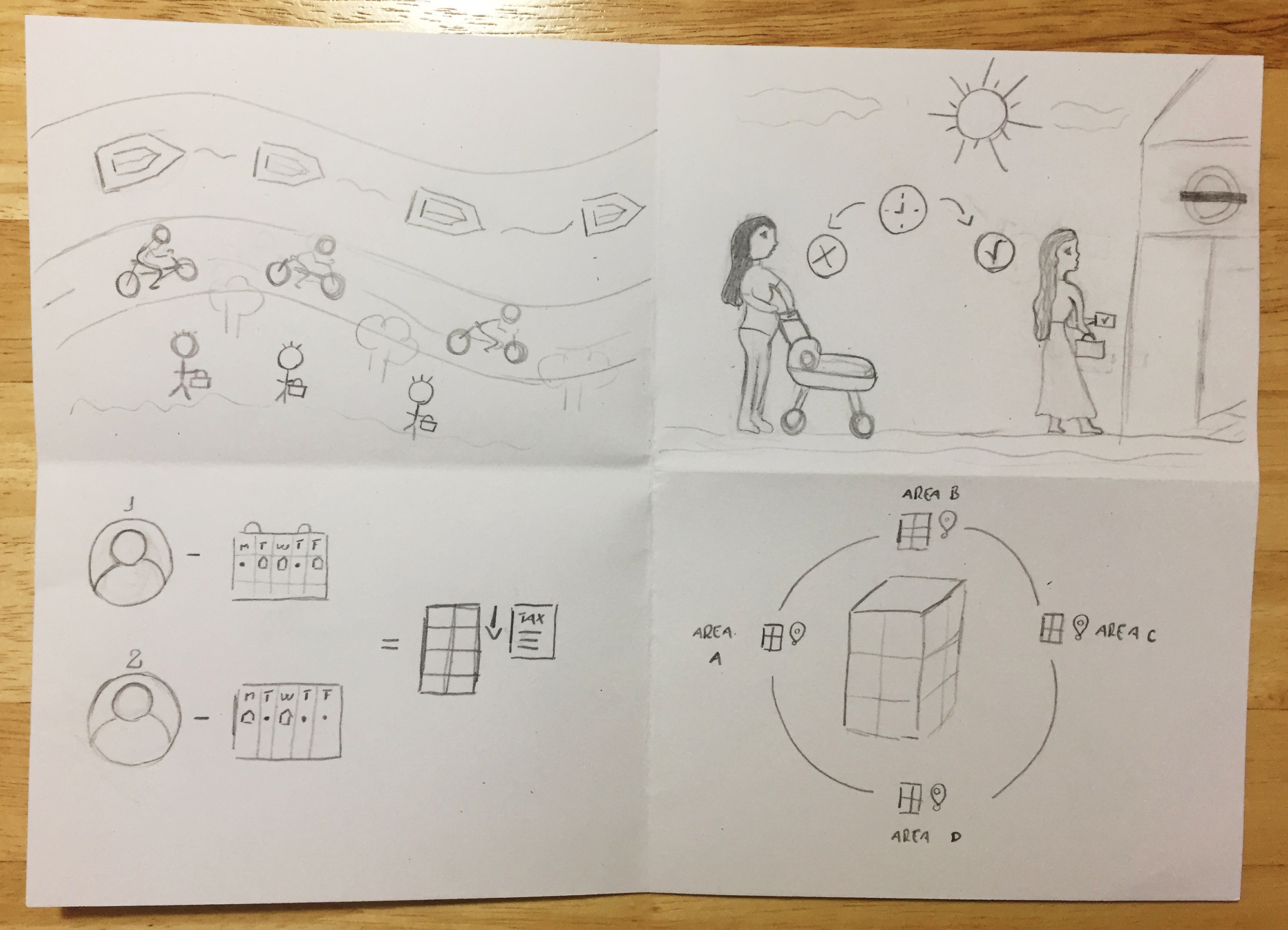Blue sky thinking
Designers are trained to foster a problem-solving mindset and, when given a challenge, they’ve got a few tricks to help steer the ship to calmer waters and let stakeholders visualize possible solutions. When competing for a new project, I was involved on tests of different levels to show my approach to human-centered design or simply prove my ability to answer a design brief with a visual solution.
One of the most interesting design tasks I was given so far didn’t have much to do with what I have been working up to now. For more than a decade I have ideated, prototyped and helped build products and interactive content for digital devices. Suddenly, I was faced with a short but complex question:
“How to encourage behaviour change to reduce everyday crowding in large urban centers?”
What took me here was another question haunting me for a while: “Why is an app the answer to every design problem and, therefore, the antidote to the issues we face as humans?”
Since I immersed in books, articles, courses and projects around UX, service design and design thinking, it was so clear to me that, from the minute you start empathizing with people to better understand their environment and how you could improve or offer an easier, more comfortable way to accomplish a task, the answer was still to be found. And it might not be another app to download to your mobile phone. We - designers, entrepreneurs, creatives - should let it go and embrace a journey with no obvious answer straight from the beginning.
Back to the design problem, fortunately I was asked to show how I would tackle the issue and, of course, didn’t have to present a final solution - at least not yet and not alone!
First things first. I started by analysing the problem, thinking of context and constraints faced by commuters in a specific location - London. Things like:
- Infrastructure is reaching its limit and demand is growing faster
- All services or jobs can be performed remotely
- Increasing living price has moved people to the outskirts and they need to cross the city centre to get to work.
Perhaps in this case, the question could be reframed to “how can we provide means for people to avoid commuting to the city centre on peak hours?”
Has this been a real project, we would need to define stakeholders and a detailed timeline including budget and staff available. What sort of experts should be included on the discussion - engineers, finance professionals, lawyers? A thorough research on latest studies and innovation in the area could provide a grounded understanding of the matter. Perhaps investigations and reports carried out by universities, government, consultancies, news agencies.
We would then move into user research, interviewing and following commuters in both sides of the spectrum - extreme and mainstream - to empathise and understand their routine and ways of operating. Different age groups, gender, occupations, people using public transport to go to work, drivers, cyclists. Experts in the area should be included for insights to what has already been done to tackle the challenge: engineers from TFL, government transport department, law regulators, HR teams at big corporations.
Collecting relevant information and inspiring stories on sticky notes are a great way to share with the wider group and clearly visualise common themes. As we spot pain points we can try to elaborate on a diverse set of questions that will lead to the innovation phase.
How might we regulate time allowance for people to commute within the city centre?
How might we encourage more flexibility in the workplace, so that employees can perform tasks remotely?
How might we create connected spaces for the local community?
How might we regulate individual drivers and encourage car sharing?
If you’re not familiar with the Crazy 8’s brainstorm exercise, I recommend you try it with your team. It sets a relaxed environment and allows you to come up with a vast amount of ideas that can later on be elaborated as possible solutions. Google explains it here: https://designsprintkit.withgoogle.com/methods/sketch/crazy-8s/
Here’s an example of my exercise on this challenge
1. Employees could perform certain tasks from home in the early morning and commute to work in alternative hours later in the day.
2. Make more use of technology to work with teams remotely.
3. Foster the use of car sharing by reducing tax - or penalising citizens driving alone.
4. Create local co-working spaces for every community, so companies can provide more flexibility to their employees.
5. Explore further alternative means of transport - by water, providing safer cycling lanes or encouraging mid-distance walks.
6. Prevent people to commute in peak-hours if they absolutely don’t need to (tourists, mum’s going out with trolleys from 8 to 9am) - create special allowances for people commuting to work.
7.. Encourage companies to provide flexible working hours and allow remote work by offering tax relief
8. Large companies could have satellite working centres spread around different areas of the city
As you can see, they illustrate a broad range of solutions that would involve diverse sectors, but could prove effective to soften this challenge. Of course it’s a colossal subject and a few ideas would have to be developed in great detail and then prototyped and tested. But it shows that when giving space to blue sky thinking, we can reach innovation with real impact on society, simply because we listen to people and understand how they feel before going straight to the next big app on the market.
How would you go about this challenge?



